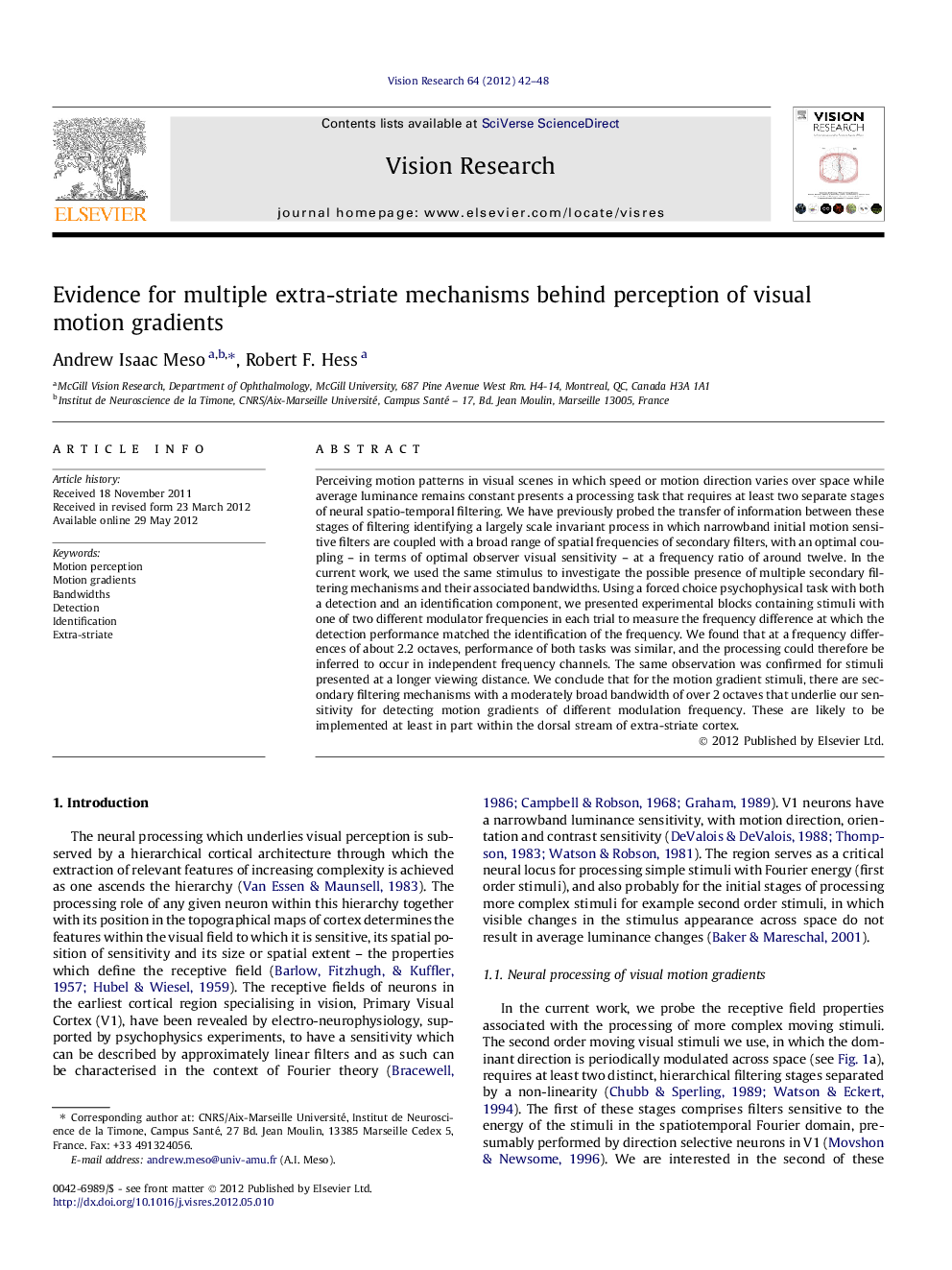| Article ID | Journal | Published Year | Pages | File Type |
|---|---|---|---|---|
| 4033950 | Vision Research | 2012 | 7 Pages |
Perceiving motion patterns in visual scenes in which speed or motion direction varies over space while average luminance remains constant presents a processing task that requires at least two separate stages of neural spatio-temporal filtering. We have previously probed the transfer of information between these stages of filtering identifying a largely scale invariant process in which narrowband initial motion sensitive filters are coupled with a broad range of spatial frequencies of secondary filters, with an optimal coupling – in terms of optimal observer visual sensitivity – at a frequency ratio of around twelve. In the current work, we used the same stimulus to investigate the possible presence of multiple secondary filtering mechanisms and their associated bandwidths. Using a forced choice psychophysical task with both a detection and an identification component, we presented experimental blocks containing stimuli with one of two different modulator frequencies in each trial to measure the frequency difference at which the detection performance matched the identification of the frequency. We found that at a frequency differences of about 2.2 octaves, performance of both tasks was similar, and the processing could therefore be inferred to occur in independent frequency channels. The same observation was confirmed for stimuli presented at a longer viewing distance. We conclude that for the motion gradient stimuli, there are secondary filtering mechanisms with a moderately broad bandwidth of over 2 octaves that underlie our sensitivity for detecting motion gradients of different modulation frequency. These are likely to be implemented at least in part within the dorsal stream of extra-striate cortex.
► Use of classic detection–identification paradigm on 2nd order motion gradient stimuli. ► Psychophysical estimates of spatial frequency bandwidth of secondary filters. ► Secondary filter bandwidth of 2.2: octaves broader than the primary filters. ► Modulator processing mechanisms for current stimulus likely extra-striate. ► 2nd order motion and static stimuli probably have different neural substrates.
